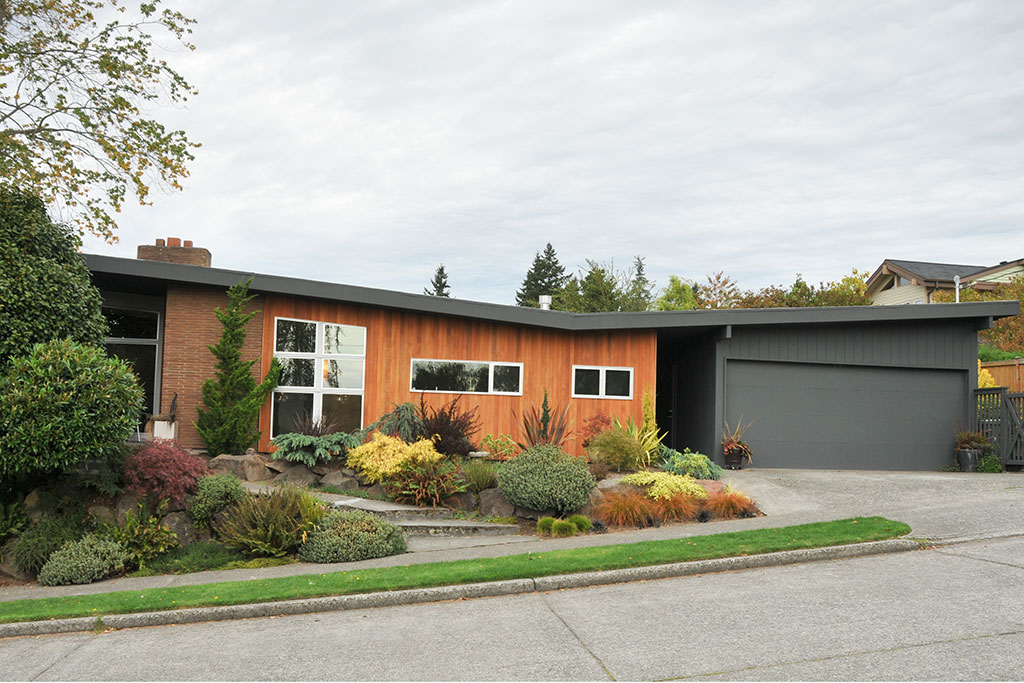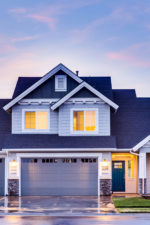Discover Your Ideal Home
With such diverse architectural designs available, it can be challenging to determine the ideal fit based on personal preference and lifestyle. After all, each one boasts distinctive characteristics, from the charming coziness of cottages to the sleek modern lines of contemporary residences.
Learn more about the following home styles, including some of their pros and cons, to find out which one perfectly complements your vision and needs.
Cape Cod
Immensely popular from the 1920s to the mid-1950s, these simply designed homes have an appeal that endures to this day. They typically feature shutter-clad dormer windows, steeply pitched shake or clapboard roofs, central chimneys, shingled exteriors, and main front entrances. Over time, older Cape Cod homes have been expanded and modernized to create extra space for more contemporary living.

Pros
- Their modest size makes them an excellent choice for smaller families, empty nesters, and first-time buyers who do not require a lot of square footage.
- The architecture offers nostalgic appeal from the mid-twentieth century.
- Whether older or newer, they exude much charm and character.
Cons
- Heating and cooling the second floor efficiently can be challenging.
- The upper-level living space is usually significantly smaller than on the first floor.
- Arranging furniture on the second floor can be tricky because of the sloped ceilings.
Colonial
This traditional-style home dates back to the 1700s, and its timeless and elegant design makes it a desirable choice for many present-day homeowners. Colonial homes boast several enticing features, including oversized rooms and a large front door, expansive foyer, and central staircase. In addition, they usually have two or three stories with four or more bedrooms.

Pros
- Their size and layout provide plenty of living space.
- They have large basements ideal for storage or turning into a finished playroom.
- Most have attractive crown molding and hardwood floors throughout.
Cons
- The design may be too formal for some.
- Lower ceilings could limit the options for updated lighting and ceiling fans.
- In older colonials, the kitchen is often separate from the dining area.
Contemporary
Often confused with modern design—which relates to a specific movement from the turn of the twentieth century—the contemporary home style is ever evolving as architects and designers continually incorporate the latest design trends, looking to the future for their inspiration. These homes are commonly constructed using eco-friendly materials and currently boast expansive outdoor spaces, open floor plans, large windows, and, most importantly, a minimalist aesthetic.

Pros
- The open-floor design and windows allow an abundance of natural light to filter through the rooms.
- Their sleek, clean lines can make the spaces easier to decorate.
- They are energy and environmentally efficient.
Cons
- They can be more expensive to build or buy due to the cost of sustainable materials.
- It can be challenging to meld this design with other styles.
- Depending on personal taste, the appearance and feel may be too sterile.
Craftsman
Emerging in the early twentieth century, Craftsman houses offer distinguishing exterior features such as overhanging eaves and wide front porches. Handcrafted built-in furniture, carved woodwork, and stained-glass windows contribute to this home style’s comforting appeal and unique charm.

Pros
- They are well-built, highlighting the beauty and quality of the craftsmanship.
- An open floor plan makes it easy to integrate more contemporary features.
- Their sprawling porches offer a warm and inviting atmosphere.
Cons
- The woodwork can be costly to restore and maintain.
- In part because they’re expansive, the porches tend to require higher maintenance.
- They are more expensive to purchase due to their historical significance.
Midcentury modern
These single-story or split-level style homes gained prominence in the mid-1950s. Characterized by flat roofs, straight lines, floor-to-ceiling windows, and open, spacious layouts, midcentury design strongly emphasizes simplicity and the integration of nature and its surroundings.

Pros
- It remains a highly sought-out style, making it likely these homes will continue increasing in value.
- The design and layout provide an efficient use of space.
- The blend of outdoor and indoor living areas supports any lifestyle.
Cons
- It can be difficult to control the inside temperature due to the expansive glass windows.
- The windows may also compromise privacy.
- Many are older homes that may require significant updating.
Traditional rancher
Ranch-style architecture grew in popularity during the postwar suburban boom of the 1950s and 1960s. These single-story homes come in various sizes and configurations, such as rectangular, U, or L shapes. The designs are straightforward, featuring large windows, sliding glass doors, and low-pitched roofs. They also often include attached garages and finished basements.

Pros
- Most have open floor plans that combine the kitchen, dining area, and living room, encouraging integrated living.
- The style’s widespread appeal makes these homes a good investment.
- They’re ideal for aging in place due to their single-story layout.
Cons
- They tend to have smaller yards because of their size.
- The big glass windows can reduce privacy.
- Since they’re longer and wider, they’re not as cost-effective to heat or cool as a two-story home.
Tudor
The distinctive features of Tudor homes are many. Besides their steeply pitched roofs with broad gables and clusters of windows, they also offer beautiful exterior masonry work, such as brick or stucco facades, and ornamental chimneys. In addition, they have a well-proportioned floor layout with exquisite wood paneling, ceiling beams, and impressive wooden staircases.

Pros
- They’re well-built and easy to renovate.
- They have outstanding curb appeal due to the exterior features.
- There are many sizing options, from small cottages to huge mansions.
Cons
- They are usually more costly to buy.
- Because of their age, they will likely need repairs.
- A stucco exterior is more demanding to maintain.
Victorian
Typically spanning two to three stories, Victorian homes are renowned for their elaborate floor plans, lofty ceilings, and pitched gabled roofs. Intricate interior trim and millwork, wooden staircases, ornate fireplaces, elaborate wainscoting, and welcoming wraparound porches are all hallmarks of Victorian architecture.

Pros
- Their elaborate stained-glass and bay windows provide ample charm.
- The large windows yield an abundance of sunlight.
- They offer a chance to own a piece of history, as many are designated as historic homes.
Cons
- They can be costly to maintain, and renovations are usually expensive to complete.
- A historic designation may limit what changes can be made.
- They may require higher home insurance rates.
In the search for your perfect home, remember that it should resonate with your lifestyle and personal tastes. For expert guidance, seek the advice of a real estate agent, who can walk you through all your options. And, above all, take your time, explore the possibilities, and trust your instincts—they’ll lead you in the right direction.


















